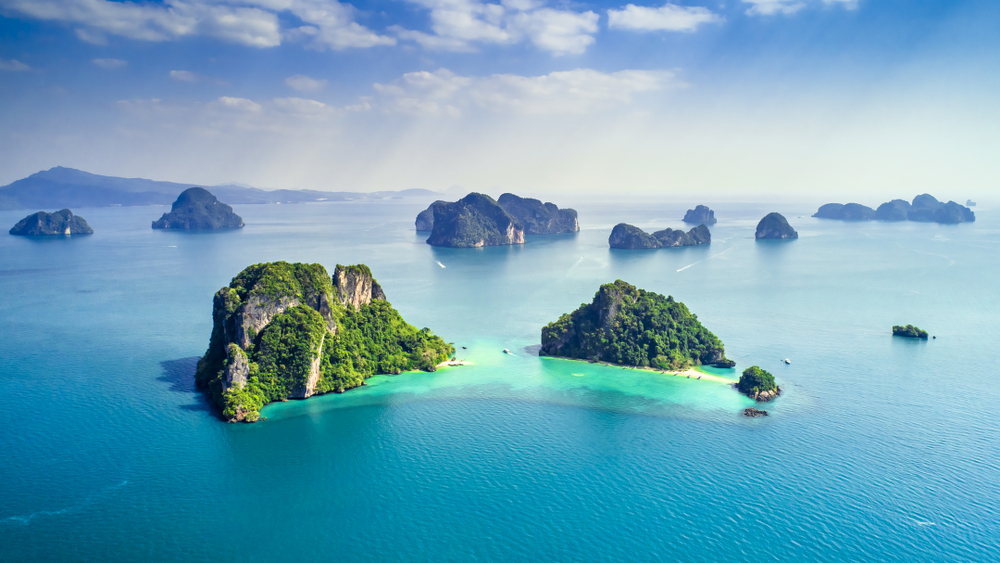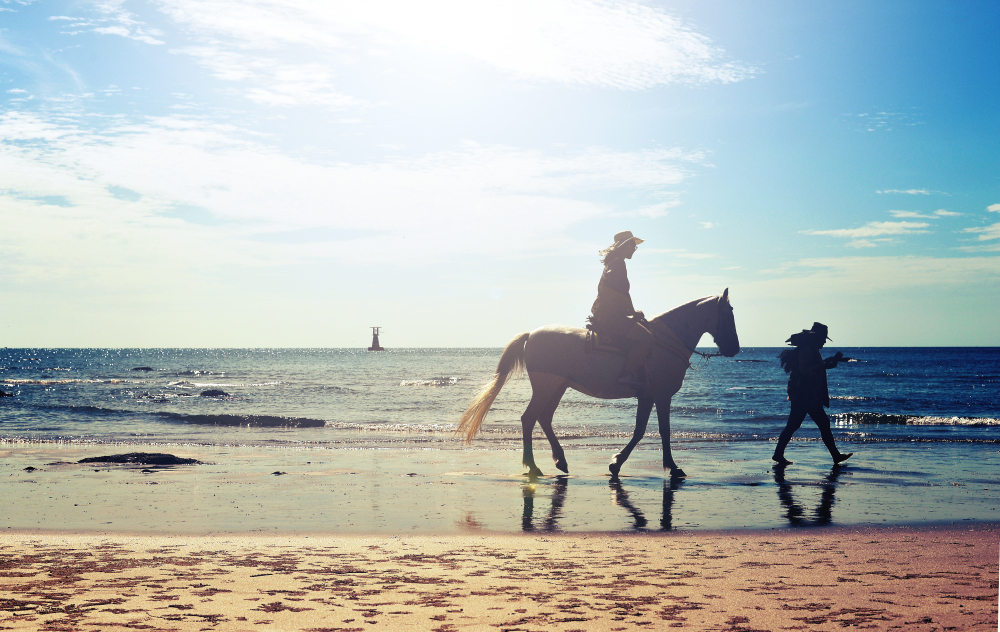Second-home investment destinations take the spotlight in Thailand
The pandemic has hit Thailand’s second-home destinations hard, but a surge in interest from domestic buyers and fundamentals of sun, sea and sand provide hope for the future

Turn the clock back to early 2020 and Phuket’s beaches buzzed with peak-season holidaymakers soaking up the island’s signature mix of sun, sea and sand.
Honeymooners lounged under resort cabanas, families set sail for snorkeling trips and kids cut loose in the cerulean waters.
Since the pandemic shuttered Thailand’s borders, however, those same shorelines have fallen silent, devoid of international arrivals—and homebuyers.
Unlike other Thai resort destinations, Phuket’s residential property market has historically relied on overseas investors.
In 2019, foreigners purchased 90 percent of new 5,471 condominium units, according to global real estate consultancy Knight Frank. Most hailed from China, Hong Kong, and Singapore, buoyed by rental yields and second-home opportunities largely off-limits in their native countries.
Yet with travel restrictions still in place—in primary investor markets in Phuket and the rest of Thailand—the pandemic has hit the island’s property market hard. Knight Frank notes that only 1,862 units from seven condo projects hit the market last year, an annual drop of 66 percent.
Some developers have chosen to bite the bullet and pause marketing efforts. Others have slashed prices and started getting creative with their services, offering value-adds such as bespoke furniture packages and even long-stay visas like the Thailand Elite Card. But one of the most significant trends to emerge from the past 20 months is the rise in demand from the domestic Thai market.
“The pandemic has caused a dynamic shift in the second home market,” says Bill Barnett, managing director of Phuket-based hospitality consultancy C9 Hotelworks and chairperson of the PropertyGuru Asia Property Awards (Greater Niseko) judging panel. “We have seen an entirely new segment of luxury domestic Thai buyers. Call it urban angst but lifestyle property for Thais is hot again.”
International travel restrictions, worsening pollution in Bangkok, and workplace uncertainty are just some of the factors behind this surge in interest for resort properties. Wealthy urban investors are also looking to escape the city and enjoy a healthier lifestyle.
“If you look back five years, island real estate was focused on investment-type condominiums, but today, it’s single-family homes or second residences,” adds Barnett.
Hua Hin is primed to cater to this domestic investment resurgence. A two-and-a-half drive from Bangkok, the coastal town’s combination of high-end villa developments, world-class golf courses, and watersport-orientated lifestyle activities has long been a hit with international investors and retirees. Over the last 12 months, however, the domestic market accounted for 64 percent of total transactions in Hua Hin.
One Hua Hin development already benefitting from this new wave of investment is The Banyan Thailand. The resort community is best known for featuring one of Thailand’s top golf courses—designed by renowned local architect Pirapon Namatra. It is home to bespoke villas and plots, ranging from THB14m (USD429,053) to ultra-luxury options around THB80m (USD2.45m).
Most residents traditionally hail from Western Europe. But in recent years domestic investor interest has surged, with Bangkokians leading the way. Although the pandemic has inevitably accelerated this trend, the resort’s CEO Tjeert Kwant also credits it to shifting perceptions of Hua Hin.

“The town was often viewed as a sleepy retirement destination, but the pandemic in a way has done a lot to change that image,” he says. “For instance, some highly influential bloggers, who probably wouldn’t have come if it weren’t for the border closure, visited last year and loved it, which goes to show how much it has to offer now.”
Heartened by the heightened demand for Bangkok-friendly holiday homes and the absence of foreign buyers, The Banyan tweaked its marketing strategy in mid-2020 to focus primarily on the Thai capital. As Tjeert explains: “Me being from the Netherlands, having Bangkok on your doorstep is the equivalent of a neighbouring target market the size of Belgium.”
Property developers on Phuket are also adapting product offerings to cater to the new demographic. Large condominium blocks filled with small studio units have been the market default in recent years. And while a number of these project types remain in the pipeline, mixed-use properties featuring upscale lifestyle amenities are now coming to the fore.
“We expect developers in the future to focus more on high-quality, low-density developments that offer privacy and focus on space, health and wellness as key selling points,” says Tomas Noren, managing director of Phuket property firm Resava Real Estate and former member of the judging panel at PropertyGuru Thailand Property Awards.
More: Korean President flinches as reelections near, ruling afflicted by towering real estate prices
Utopia Corporation, one of the island’s most prolific developers in recent years, has already demonstrated that the pile-them-high approach is waning in Phuket. In addition to a focus on largely low-rise residential properties, one of the company’s unique selling points has been its ability to thematically differentiate its offerings. The recently launched villa development Utopia Thalang, for instance, takes aesthetic inspiration from Japan while Utopia Yamu features Moroccan design elements.
These themed properties have long been a hit with Utopia’s investor base in China. But CEO Hachi Yin believes its diverse product mix is poised to appeal to Thai buyers.
“We started thinking about how we can start opening up to the Thai market, as we’d never targeted it before,” he says. “The Thai market is now one of our priorities for 2021, but the challenge is that, unlike in China, nobody here really knows us.”
The long-term outlook for Phuket remains positive simply because the fundamentals have not been affected by the pandemic. Property prices are still very affordable compared to many other countries and often offer great rental returns
This may change with the launch of its latest project. Located on Phuket’s sunrise coast overlooking Phang Nga Bay, the Bay of Icons is a 20-rai (3.2 hectares) development surrounding Ao Po Grand Marina. Utopia has plans to transform the area over the next five years into a master-planned lifestyle and leisure enclave. It will feature exclusive residences and Southeast Asia’s first Tonino Lamborghini-branded hotel. Other perks include a 300-berth marina and a private helipad, designer retail boutiques, and upscale dining destinations.
As with most new launches over the last two years, the true litmus test for Utopia’s ambitious lifestyle destination will be the eventual reopening of the island, buoyed by the Phuket Sandbox scheme. The program, which allows vaccinated foreign tourists to enter the island, has proven relatively successful since its unveiling on July 1. Although travel concerns and ongoing quarantine requirements in other countries will limit visitor numbers, it is at least a light at the end of the tunnel for Phuket’s property industry—and indeed other key resort markets in Thailand.
“The long-term outlook for Phuket remains positive simply because the fundamentals have not been affected by the pandemic,” Noren says. “Property prices are still very affordable compared to many other countries and often offer great rental returns.
“Let’s not forget that this is still a fantastically beautiful place to live with extraordinary natural resources for its residents to enjoy.”
The original version of this article appeared in Issue No. 168 of PropertyGuru Property Report Magazine.
Write to our editors at [email protected].
Recommended
Why everyone is moving to Selangor and Johor: Malaysia’s real estate comeback
Malaysia’s upturn in fortunes is especially prevalent in secondary destinations such as Selangor and Johor
Penang’s silicon boom: How the US-China tech war is supercharging local real estate
Penang’s booming semiconductor industry has created ripples within the local real estate sector
New leader, new opportunities: How Hun Manet is shaking up Cambodia’s real estate game
Hun Manet is overseeing decent economic growth and widening access to the country’s real estate market for foreigners
Singapore embraces inclusive housing reforms amid resilient demand
The Lion City’s regulatory strength continues to exert appeal for international investors








